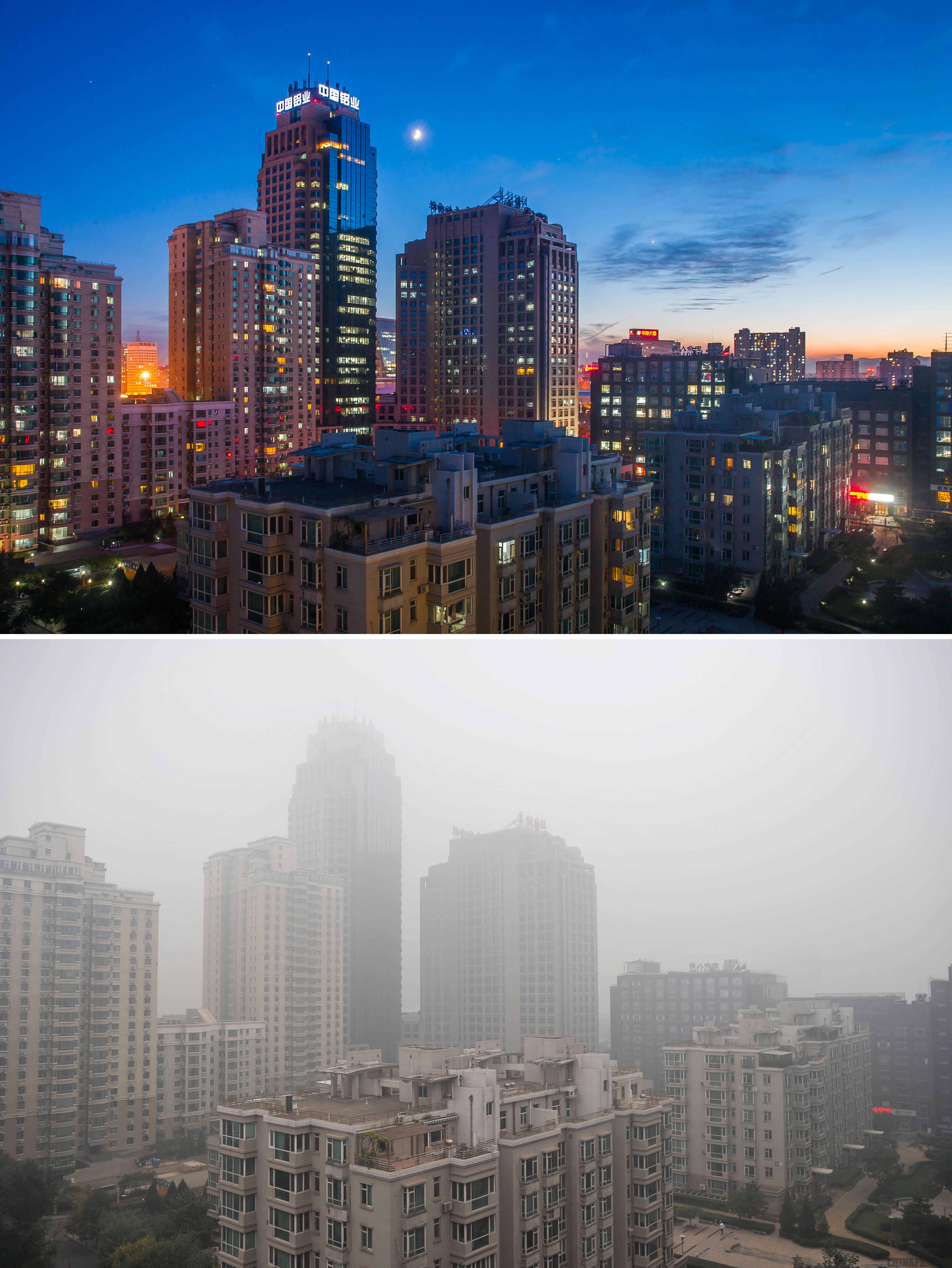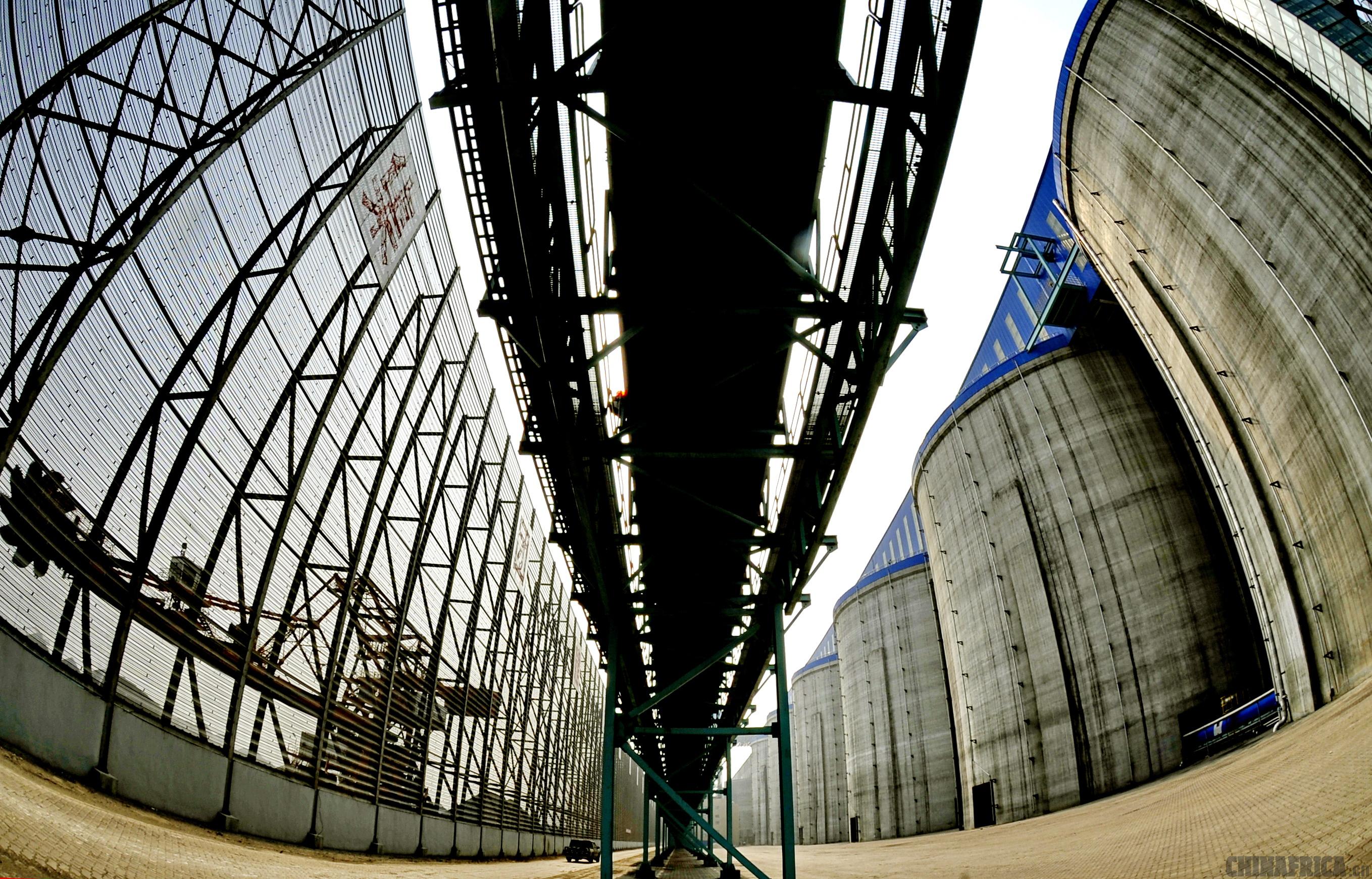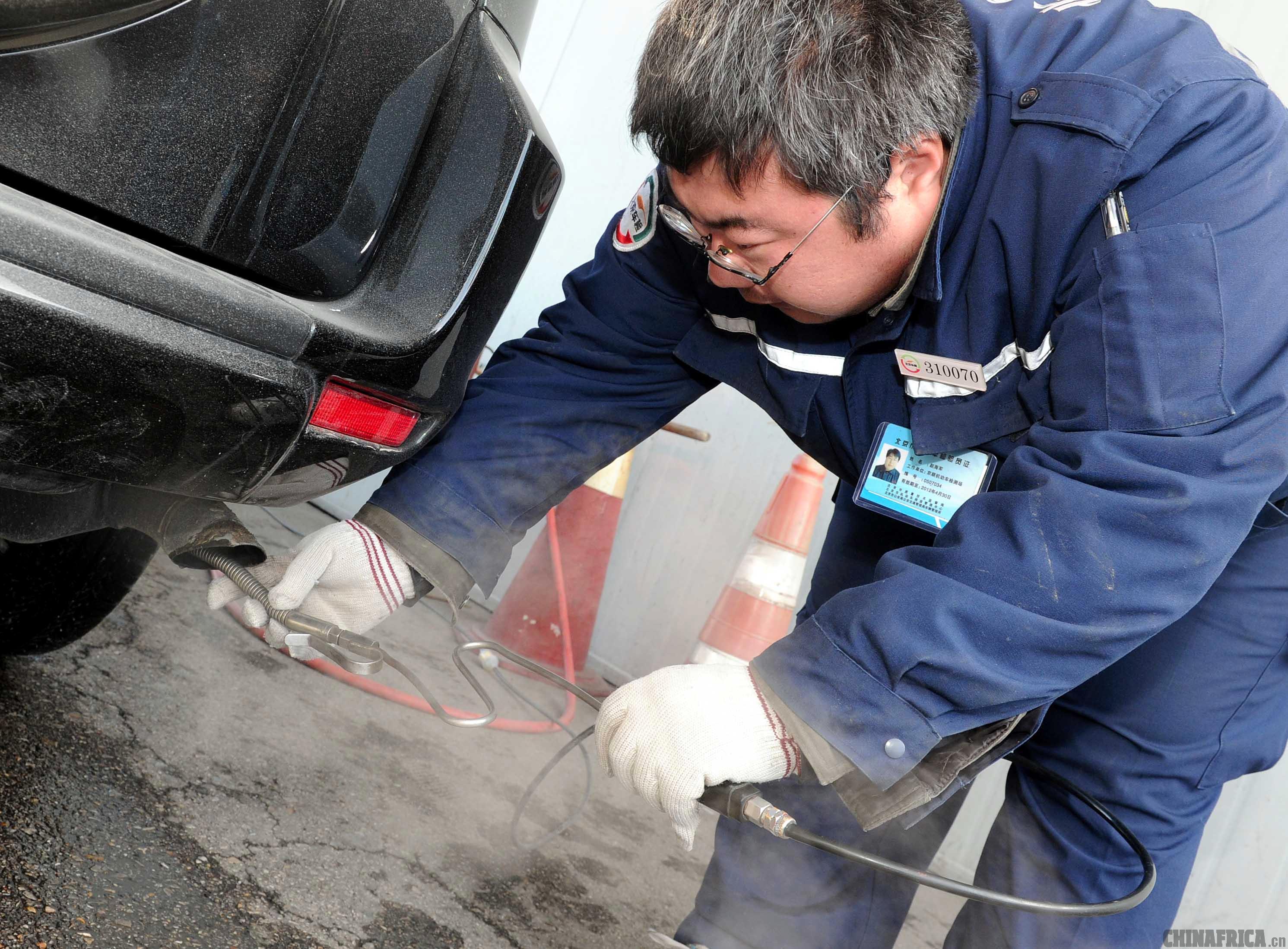|
While some Chinese people hailed the newsthat an informal economic leaders' meeting at the 2014 Asia-Pacific Economic Cooperation (APEC) forum would be held near Beijing's Yanqi Lake, many others worried whether or not these state leaders would have the courage to come to Beijing in autumn, when serious air pollution might engulf the city and its surrounding regions.
The worsening air pollution in northChinahas been a long-lasting headache. InBeijing, statistics show that there were only six days in September this year that met the national standard definition of good air quality.
"It is easy to take some temporary measures to clean up the air less than one year before the opening of the APEC Summit, but people expect the government to take concrete measures to address the root problems," said Bai Yansong, a news commentator at China Central Television.
Bai's comments recallChina's efforts in 2008 when the Olympic Games were held inBeijing. By implementing temporary measures such as closing down heavily polluting factories and restricting the number of vehicles allowed on the roads, the air was clearer during most of the days in the year when the games were held. But after the games, the factories reopened and vehicles came back on the road, pushing the city back to the original state.
 |
|
Two pictures of Beijing's Xizhimen area. They were taken on September 10 (top) and October 6 (bottom) | Action plan
An action plan against air pollution released on September 12 by the State Council,China's cabinet, brings some hopes to people wishing the government would address the root problems.
According to the Airborne Pollution Prevention and Control Action Plan (2013-17), "in five years, air quality inChinawill see a significant improvement, with heavily polluted days to be drastically reduced."
The document stipulates that by 2017, the density of airborne particles, especially PM2.5 - those less than 2.5 microns in diameter - are to be reduced by 25 percent compared to the levels recorded in Beijing and surrounding areas in 2012.
In the action plan, the Chinese Government vows to use a multifaceted approach to tackle air pollution through cutting coal use, shutting down heavy polluters and promoting cleaner production at the forefront.
Experts say that this plan is a landmark achievement in the government's fight to control air pollution."The plan shows that the government is focusing on improving air quality and paying more attention to the need to control the sources of pollutants," said Wang Jinnan, Vice President of the Chinese Academy for Environmental Planning.
Comprehensive approach
The action plan details 35 measures across 10 areas for addressing pollution, including plans for cutting vehicle emissions and coal consumption, transforming industrial structure and evaluating emissions reduction.
"These 35 measures are directed at sources of PM2.5, the main contributor to heavy smog in cities. If they can be implemented,Chinacan realize goals such as reducing coal consumption and improving air quality," said Wang Jian, Deputy Director of the Department of Pollution Prevention and Control at the Ministry of Environmental Protection (MEP).
In December last year, the Chinese Government unveiled an air pollution reduction plan aimed at cutting the level of airborne particulate matter by at least 5 percent across 13 key areas covering 117 cities by 2015.
In the new plan, the Central Government pledged to invest 1.7 trillion yuan ($277.32 billion) in the fight against air pollution over the next five years and reduce coal consumption to less than 65 percent of the country's total primary energy use by 2017, it says.
Use of clean energy such as natural gas and coal-bed methane are to be increased and construction projects that fail to pass environmental evaluations will not be allowed to continue.
To further cut pollution, combined heat and power plants will gradually replace decentralized coal-fired boilers in industries such as chemical engineering, papermaking, dyeing and tanning.
Heavier penalties will also be imposed for violations of environmental, energy conservation and safety requirements.
Although eliminating outdated methods of industrial production may have negative effects on local economies, Wang Jinnan said that the action plan will boost green industries, which can also greatly stimulate GDP growth.
 |
| Pollution control facilities at Huanghua Port in Hebei Province |
Cleaner fuel
The new action plan also aims to control vehicle emissions.Chinahas been the world's top automobile producer and exporter for four consecutive years. According toChina's traffic administration authority, the number of motor vehicles in the country reached 247 million by July this year.
According to the MEP, airborne pollutants emitted by automobiles are still increasing, accounting for more than 20 percent of airborne pollutants.
"The main factor affecting vehicle emissions is the quality of fuel. Improving fuel quality can help reduce pollution and prevent smog," said Zhou Dadi, an expert with the China Energy Research Society.
On September 17, the MEP unveiled phase 5 of its emission standards for light vehicles, which are expected to help reduce emissions of nitrogen oxide by 90,000 tons and fine particles by 20,000 tons within five years.
Under the country's fuel quality improvement timetable, phase 4 standards for gasoline and diesel should be met by the start of 2014 and 2015, respectively. Both gasoline and diesel are expected to meet phase 5 standards by the start of 2018.
Focus onBeijing
Under the national action plan, special attention is being given toBeijingand its neighboring Tianjin Municipality and Hebei Province.
"The region is being targeted because air pollution is most serious there," Wang Jinnan commented.
The average levels of PM2.5 inBeijingand its surrounding areas' air reached 115 mg per cubic meter, more than three times what the national standard defines as good air quality.
Echoing the national action plan, the Beijing Municipal Government unveiled its own five-year plan on September 12 to improve air quality significantly by 2017, with PM2.5 levels to be reduced to around 60 mg per cubic meter.
The capital currently has 5.35 million vehicles, with annual vehicle emissions of about 900,000 tons, according to Li Kunsheng, an official in charge of vehicle emissions management at the Beijing Municipal Environmental Protection Bureau.
"Vehicle emissions have been proven to contain over 100 carcinogenic substances. Even worse, the emissions are discharged at low altitudes, affecting people's health directly," Li said.
According to the city's plan, by 2017, the number of vehicles in the city is expected to be no more than 6 million.
By promoting clean energy and low-emission vehicles, reducing the intensity of vehicle use and strictly enforcing regulations, the government expects to reduce total vehicle fuel consumption by 5 percent or more compared to 2012.
In order to clean up the city's air, the Beijing Municipal Government also plans to raise fees for sulfur dioxide and nitrogen oxide emissions this year and levy a fee for emissions of volatile organic compounds next year.
UnderBeijing's plan, companies that break environmental laws will not qualify for bank loans, fund-raising through public offerings or value-added tax breaks starting this year.
The Central Government also takes actions. Sources from the Ministry of Finance show that the Central Government has earmarked 5 billion yuan ($829 million) to improve the air quality inBeijing,Tianjin, Hebei and surrounding areas.
 |
|
A worker at Beijing's Jingshun Vehicle Testing Center conducts an emissions check on a private car on February 1 |
Accountability
According to Zhai Xiaohui, an official with the Publicity Division of the Beijing Municipal Environmental Protection Bureau, 84 targets set forth in the capital's air-pollution reduction plan have been assigned to specific officials from 42 government departments and 23 companies.
"This plan is the most workable one in recent years concerning air pollution, and it makes clear the responsibilities of each related department and person," Zhai said, adding that implementation of the plan will be linked to the performance evaluation system for government departments and officials.
Officials at local levels inChinahave long been blamed for ignoring environmental security due to their GDP-obsessed development strategies.
"It's time to change our development model and put more focus on environmental protection," said Ma Jun, Director of the Institute of Public and Environmental Affairs, a Beijing-based non-governmental organization.
Ma advises the government to evaluate local officials' performances based on their environmental records rather than on economic growth rates.
Zhai, in turn, calls for greater public involvement in fighting air pollution. "Considering the dire situation we face today, the public's participation is sorely needed if we are to be successful," he said.
On September 23, the MEP released targets for the six most polluted regions. By 2017, the concentration of PM2.5 is to be reduced by 25 percent from 2012 levels inBeijing,Tianjinand Hebei; by 20 percent in Shanxi and Shandong; and by 10 percent in Inner Mongolia.
∗ niyanshuo@chinafrica.cn
|